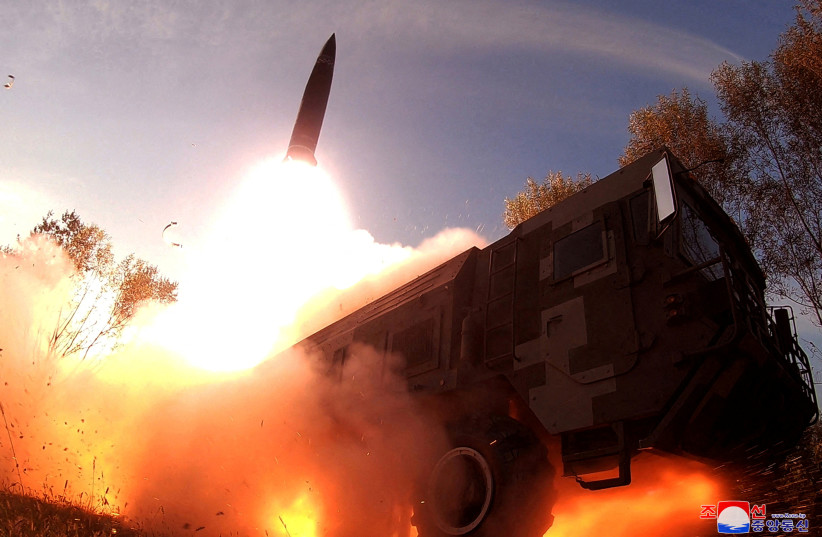North Korea’s firing on Thursday of its second intercontinental ballistic missile (ICBM) since March – after a nearly five-year hiatus – is yet another sign of the crumbling deterrence against using nuclear weapons worldwide – which has dangerous implications for Israel and Iran.
Fans of the Trump administration who say that he had the North’s leader Kim Jong-un neutralized in a box highly exaggerate the former administration’s achievements.
But it is true that from Trump’s meeting with Kim in 2017 until the end of his term, Pyongyang did not fire any ICBMs, the specific kind of missile which has the potential to deliver nuclear weapons all the way to the US.
In fact, this moratorium continued for the first 14 months of the Biden administration’s term.
But since the first ICBM launch in March, Kim has been increasingly aggressive in demonstrating his nuclear power and trying to extort Washington into concessions simply to get him to stop further nuclear advances.
Convincing North Korea into giving up nuclear weapons
Over the years, America has generally wanted to try to convince North Korea to give up its nuclear weapons program in exchange for significant global aid and rejoining the family of civilized nations.

Kim has tried to get the US to drop full “denuclearization” as a goal and to settle for freezing the current status of the nuclear program in which it has between 20-60 nuclear weapons.
As the price for failing to agree to Kim’s terms, the North has driven itself forward to develop new capabilities for delivering nuclear weapons, such as from a hypersonic missile (almost impossible to shoot down due to its speed and maneuverability) or from a submarine.
Little by little, Pyongyang is moving toward crossing every nuclear threshold that it had not yet crossed, hoping it will achieve a fully modernized nuclear weapons arsenal, before it needs to refreeze the program as part of some kind of negotiation.
Recent reports indicate that it is making underground preparations for a full underground nuclear test, the most destabilizing action it could take short of actually using a nuclear weapon.
Along with Russia’s now seemingly regular threats to use nuclear weapons against Ukraine and Iran’s refusal to return to the 2015 nuclear deal’s restrictions, the entire arms control global infrastructure appears on the verge of teetering into a total collapse.
If that happens, these parallel trends may be even worse than the sum of their parts.
Around a decade ago, Iranian nuclear scientists were traveling back and forth to North Korea multiple times to witness and learn from various nuclear tests.
But as of 2020 and 2021, there were reports from former CIA officials and the media that North Korea was proliferating the Hwasong-12 ballistic missile to Iran along with the technology for converting it into a two-stage ICBM that would function similarly to the Hwasong-14 and -15 missiles.
This sharing of advanced nuclear weapons technology by Iran and North Korea, after what might have been a pause in the sharing of nuclear know-how, is one of the most ominous signs of the failure of nuclear deterrence.
If for decades, countries with nuclear weapons viewed them as so dangerous that they limited sales of related technologies, now the taboo on talking for real about using nuclear weapons is gone.
In the Mossad’s 2018 heist of Iran’s nuclear archives, the world learned that the Islamic Republic had developed five sites for potentially testing a nuclear bomb underground.
If Kim gets away with another underground nuclear test with no real consequences and merely weak sanctions, what will keep Tehran from doing the same?
And if the ayatollahs finally undertake a full nuclear test seeing the weak manner in which the world responds to Moscow’s threats and Pyongyang’s actions, will the region destabilize to a new point from which there is no return?
As long as Kim is free to wreak the fear of nuclear havoc on those who oppose him and Russian President Vladimir Putin feels comfortable issuing nuclear threats to the West, the chances of Tehran agreeing to a new deal drop considerably – and the possibility of them someday using a nuclear weapon jumps correspondingly.
